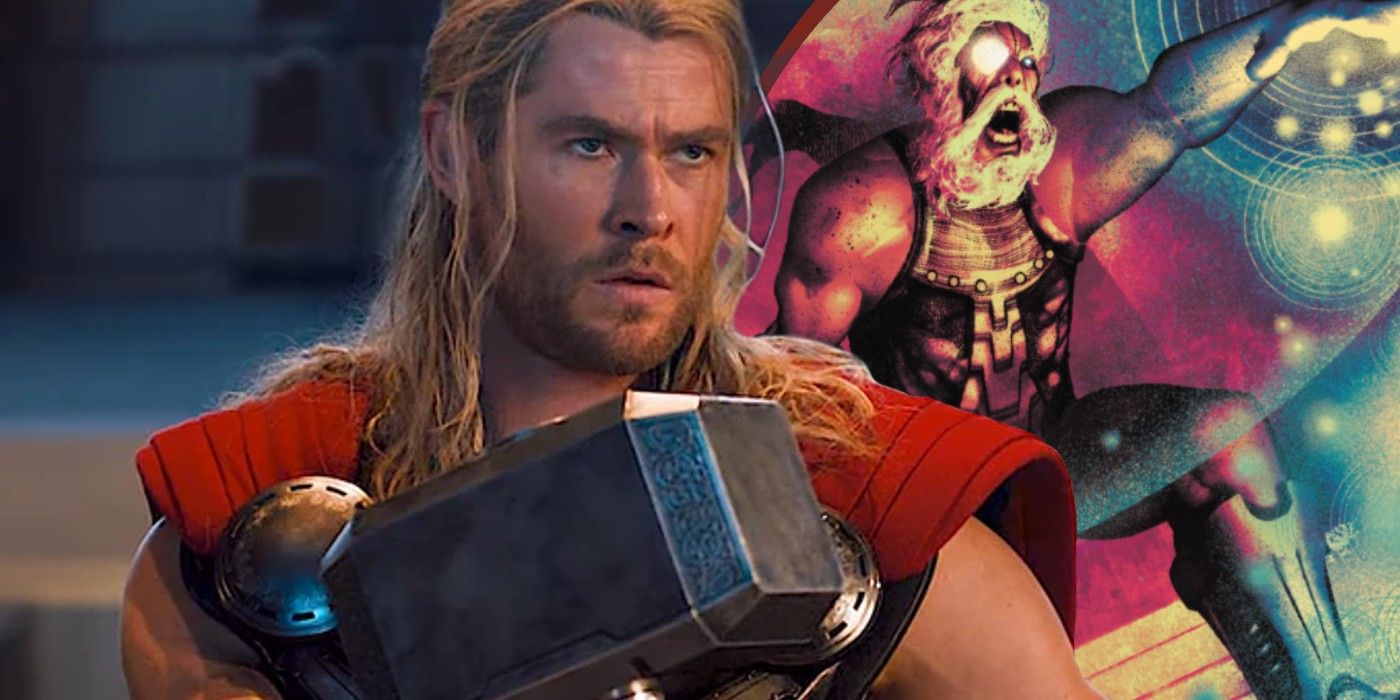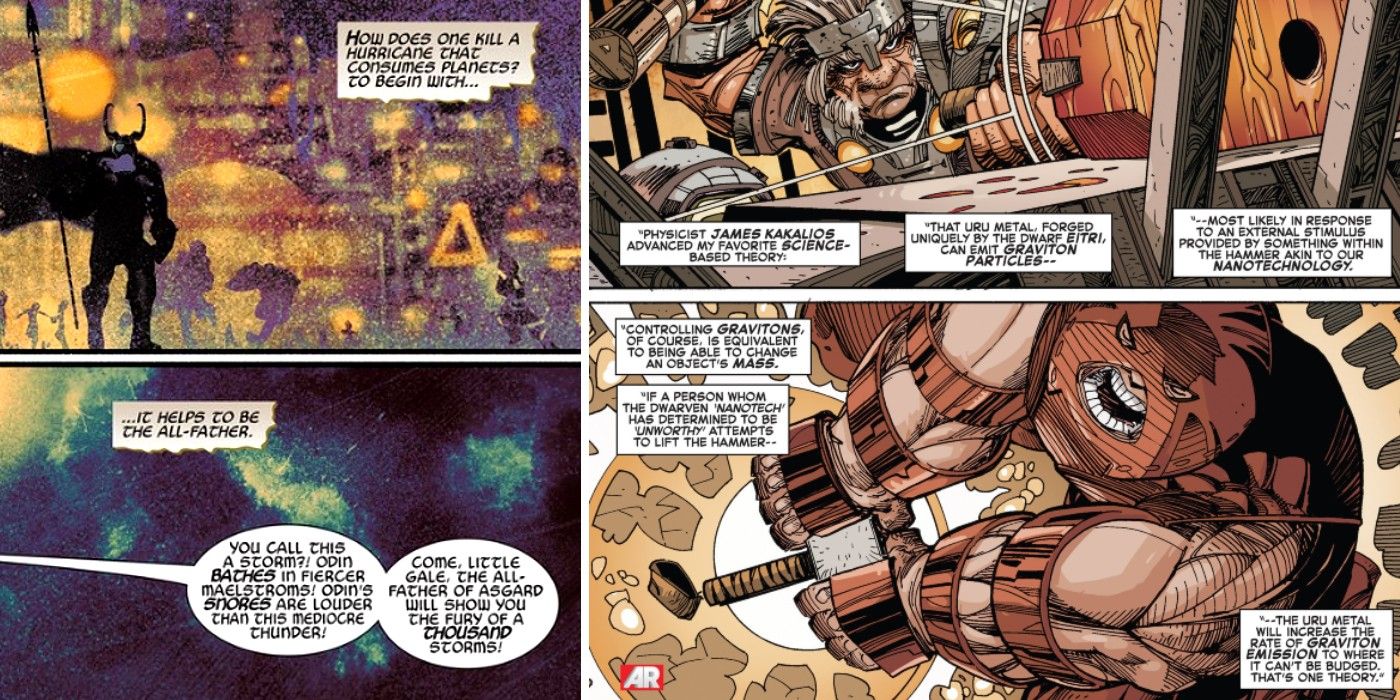While Thor's enchanted hammer Mjolnir is one of the most powerful weapons in the Marvel Universe, it's also one of its greatest mysteries. Mjolnir's wielder can access a range of powers, from the mastery of storms to dimensional travel. However, these abilities are only available to those who can lift the hammer, which becomes impossibly heavy when the would-be wielder isn't "worthy."
Over the past sixty years, Mjolnir's most recognizable and iconic property has been the sentence engraved on its side: "Whosoever holds this hammer, if he be worthy, shall possess the power of Thor." This is Odin's spell, meant as a safeguard from letting the weapon fall into the wrong hands. Magic, however, is never straightforward, and over the years Thor's hammer has been used by villainous characters. Notably, Magneto's mastery over any form of ferrous material allowed him to exert limited control over Mjolnir, deflecting it and even hurling it back at its owner. During the Age of Khonshu storyline, it was revealed that Uru metal is not "rubble from the days of creation," as it was described before. Uru is actually harvested from moon rock, as proved by the Khonshu-empowered Moon Knight when he manipulated Mjolnir with ease. If Odin (and the comics) lied about this, what else is still unknown about Thor's hammer?
The enchantment of worthiness seems rather volatile, as is traditionally the case with magic. Thor himself temporarily lost the privilege of lifting Mjolnir in the Original Sin event, courtesy of one little whisper from Nick Fury that made him doubt his right to godhood. The Odinson emerged from that crisis stronger than ever, and the same can be said for Mjolnir. Thor reforged the hammer after it was destroyed, using the sun itself as a forge. This made the weapon even more powerful, also revealing some crucial details on its origins in the process. Writer Jason Aaron spent seven years redefining Thor's mythology and revitalizing the character. At the end of his tenure, he touched on the very core of the God of Thunder's symbolism: his hammer. Aaron revealed that, when Odin created Mjolnir, he trapped inside it a dangerous and unwieldy divine power, the God Tempest, literally "the mother of all storms," as depicted by Aaron, Russel Dauterman, Matthew Wilson, and Frazer Irving in Mighty Thor #12.
The presence of the God Tempest inside the weapon is useful to explain Mjolnir's many powers and properties and its sometimes fickle behavior. It ties especially well with one explanation that real-world scientists proposed, and which was then adopted by the comics in The Indestructible Hulk #8 (from Mark Waid and Walter Simonson), where it's suggested that Mjolnir can change its mass by emitting graviton particles, which influence mass. This means that the hammer can both be light enough for Thor to swing and too heavy for enemies to lift.
Where do the gravitons come from, however? If Odin's magic was able to trap a planet-sized living storm inside a small chunk of Uru, Mjolnir must be connected to some extra-dimensional space. This is actually Marvel's default explanation for heroes whose powers allow them to gain mass or generate unusual amounts of energy, with series like Avengers Academy explaining that heroes like Giant Man and Reptil who grow and change shape are actually borrowing mass from other dimensions.
This revelation could finally explain how Mjolnir's magic actually works, including how it generates gravitons to make the hammer impossibly heavy to the unworthy. If Thor's most powerful weapon is, essentially, a door to another dimension, that explains how it can tap into an almost unlimited amount of energy and mass. Most amusingly, the God Tempest is a conscious being, meaning that while it lends Mjolnir incredible power, its magic comes with a capriciousness that even Thor can't always predict or control.


